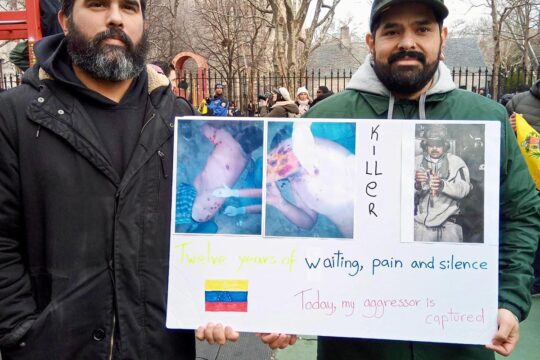The choice of the historic site was no coincidence. More than 5,000 innocent people -- children, young and old women and men-were brutally killed by the notorious Interahamwe and rampaging soldiers from the former Rwandan Armed Forces (Ex-FAR) at Nyanza-Kicukiro after the Belgium soldiers, serving in the Peace Keeping Mission in Rwanda (UNAMIR), deserted the fleeing largely Tutsi refugees in April, 1994.
As thousands of people, including survivors, tried to wipe out their tears and control their emotions, Bishop Servillien Nzakamwita of the Catholic Diocese of Byumba, led prayers as victims were led to their final journey at this historical site.
Among the mourners, included the chief guest, Rwandan President Paul Kagame and the First Lady Jeanette Kagame, who stood silent and shared solemn prayers as they witnessed a casket bearing remains of some victims was slowly, and in pin-drop silence, being drawn down the grave, representing the victims buried in three major mass graves at the location.
Later, the President and the First Lady, laid wreath, followed by other dignitaries including, the President of the Association of Genocide Survivors (IBUKA), Theodore Simburudali. President Kagame later lit a candle of hope.
Background solemn songs were heard over large loud speakers before the Master of Ceremony (MC) started to invite several groups to perform poem, choir and give speeches and survivors narrating their heart-throbbing stories.
The crowd was vividly moved when ‘'One hundred Children Survivors Group'' from Gisozi was called to stage to sing a song leaving the eyes of the multitude wide open as they joined them in deep sorrow. Other group made of East African Musicians from Kenya, Uganda, Burundi, Rwanda and Tanzania were given an opportunity to remind the crowd of what happened 15 years ago and warned with their shrilling voices: ‘'Never Again.''
Two persons gave heart-throbbing testimonies on what they witnessed and how they miraculous survived the 100-day heinous ordeal.
Venuste Karasira, 25, a survivor of Technical School (ETO) slaughter, close to where the commemoration took place, shocked the crowed after narrating a long story when he revealed that ‘' the killers thought I was dead and left the area.''
An American, Karl Wilkens , who was then working with a Non-Governmental Organization Adventist Development and Relief Agency (ADRA) in Rwanda, narrated how two young persons came to their house, trembling with death ‘warrants' on their hands simply because their identity read they were "Tutsis".
He said, together with his wife, they set down and prayed. "Finally we decided to shelter them despite the impending danger because we knew if we did not act, the two innocent souls would be slaughtered by merciless attackers," he recalled.
On the first day of mourning, the streets of Kigali City, and possibly the whole country, were deserted except for few cars, pedestrians and even movement of people. Hotels, restaurants, market places, and almost all public offices, were closed to mark the historic sad day.
As a result, several people including, foreign journalists, went without food and internet facilities in the afternoon and during the night vigil held at Amahoro National Stadium.
‘'I went around looking for a place where I can get a meal, finally I succeeded to get a place 10-kilometres away from Chez Lando Hotel,'' lamented a passer by, who declined to reveal his identity.
President Kagame and the First Lady were among over 25,000 people who turned up at stadium for the night vigil and lit the first of 10,000 candles.
The candles carefully spread on the stadium turf by lighting one candle after another until they formed the word ‘'HOPE'' in three different languages; English, French and Kinyarwanda.
The week-long mourning period would see Rwanda giving descent burials for their slain loved ones, remembering the tormenting events, and for sure, digesting at the same time, President Kagame's call for Rwandan to face the future with their heads high and brighter.
During a press conference convened shortly after launching of the commemoration week, Rwandan Minister for Sports and Culture, Joseph Habineza, disclosed that remains of thousands of Tutsis and moderate Hutus killed during the 1994, and preserved in various memorial centres, would be buried.
‘'We will only keep a few and the rest will be accorded a descent burial,'' said Habineza in response to a question from Hirondelle for how long the remains would be left unburied.
According to the minister, at each centre where the remains would be buried, a list of names of victims will be written down and displayed for posterity.
As for the memorial sites, the minister said they would be maintained forever, but there would now be only one symbolic memorial site at each district.
NI/SC/GF
© Hirondelle News Agency



